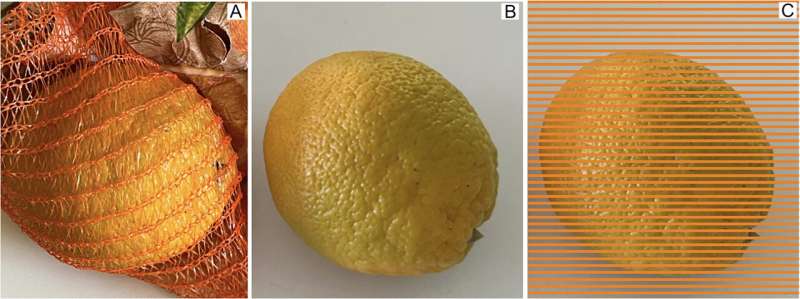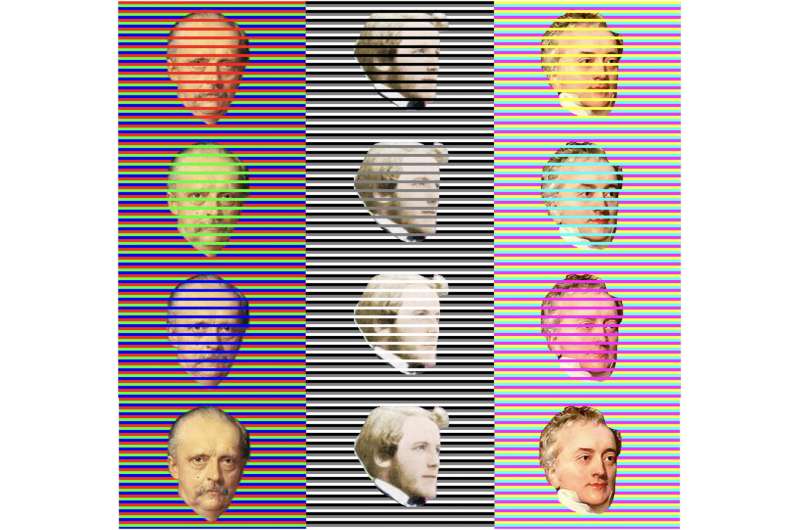#Study reveals why orange netting packaging makes oranges look more appealing


People who shop for groceries at their local supermarket may have noticed that some of the fruit they purchase may not look the same at home as it did in the store—or more specifically, after it is removed from its packaging. This is due to what has come to be known as the “confetti illusion”—in which pieces of colored material partially obstructing the view of an image can change the way our brain processes its coloring.
Karl Gegenfurtner, a psychologist at Giessen University, in Germany, has found that the “confetti illusion” used by fruit sellers and others to push products is due to a perceptual illusion that involves the way our brains are programmed to interpret visual information. In his paper published in the journal i-Perception, he describes a brain phenomenon called color assimilation and how it contributes to optical illusions.
Food growers learned a long time ago that if they packed oranges in orange netting, the oranges inside look more orange, which the mind interprets as a more luscious ripe fruit. The same thing is true for yellow netting for lemons and green netting for limes. The color of the fruit as seen between the plastic netting is altered by what Gegenfurtner describes as color assimilation.
He felt compelled to take a new look at the confetti illusion after experiencing it himself upon returning home from the supermarket to discover the bright orange appearance of his oranges was noticeably greener once removed from their netted bag.
After some thought, he noted that it could be explained by prior research showing that sensory stimuli are always made up of partial information—the things we see are assembled into images only after the brain has knitted together input from several sources. When we look at an ordinary sidewalk, for example, we may perceive different images depending on ambient temperature, scents like recently mowed grass, or even the leftover residue in our mouths from our latest meal.

By posting pictures of human faces with colored bars drawn across their faces in his paper, Gegenfurtner demonstrates that the change in fruit color is not due to the way light reflects off the netting. Because the images are 2D, there is no chance of colors from the bars reflecting off the imagery under them, yet the skin color and tone of the person behind them seems to change anyway.
Karl R. Gegenfurtner, Perceptual ripening of oranges, i-Perception (2024). DOI: 10.1177/20416695241258748
© 2024 Science X Network
Citation:
Study reveals why orange netting packaging makes oranges look more appealing (2024, August 22)
retrieved 22 August 2024
from https://medicalxpress.com/news/2024-08-reveals-orange-netting-packaging-oranges.html
This document is subject to copyright. Apart from any fair dealing for the purpose of private study or research, no
part may be reproduced without the written permission. The content is provided for information purposes only.
If you liked the article, do not forget to share it with your friends. Follow us on Google News too, click on the star and choose us from your favorites.
If you want to read more Like this articles, you can visit our Science category.




